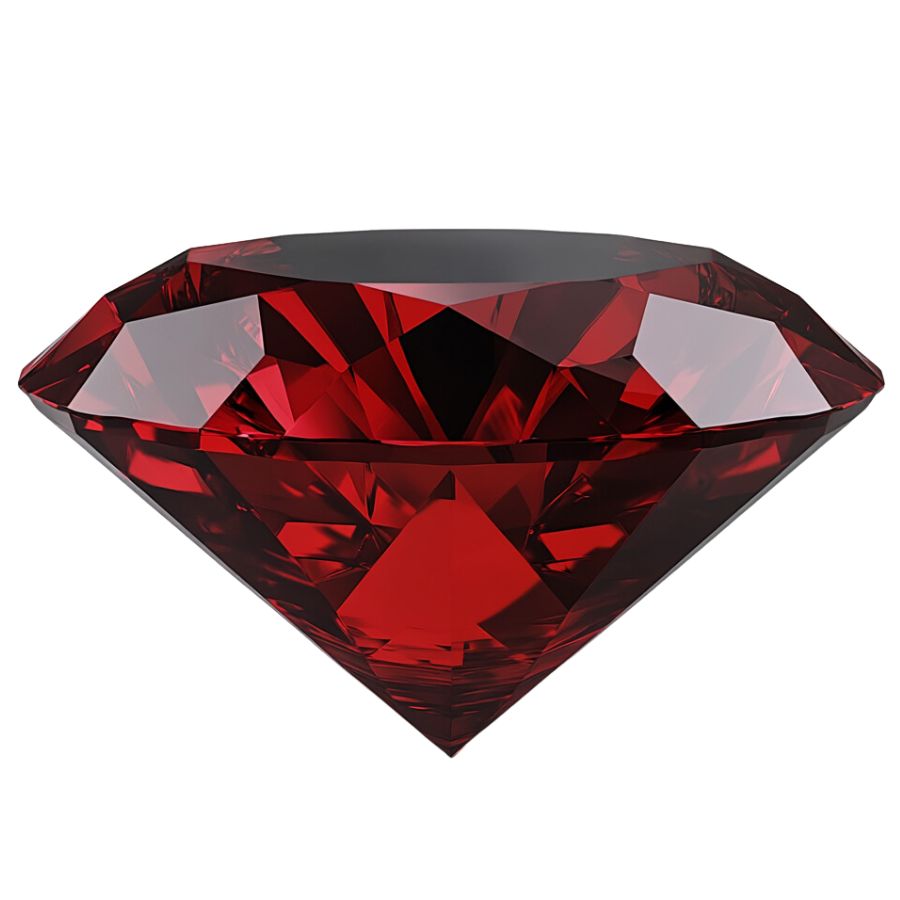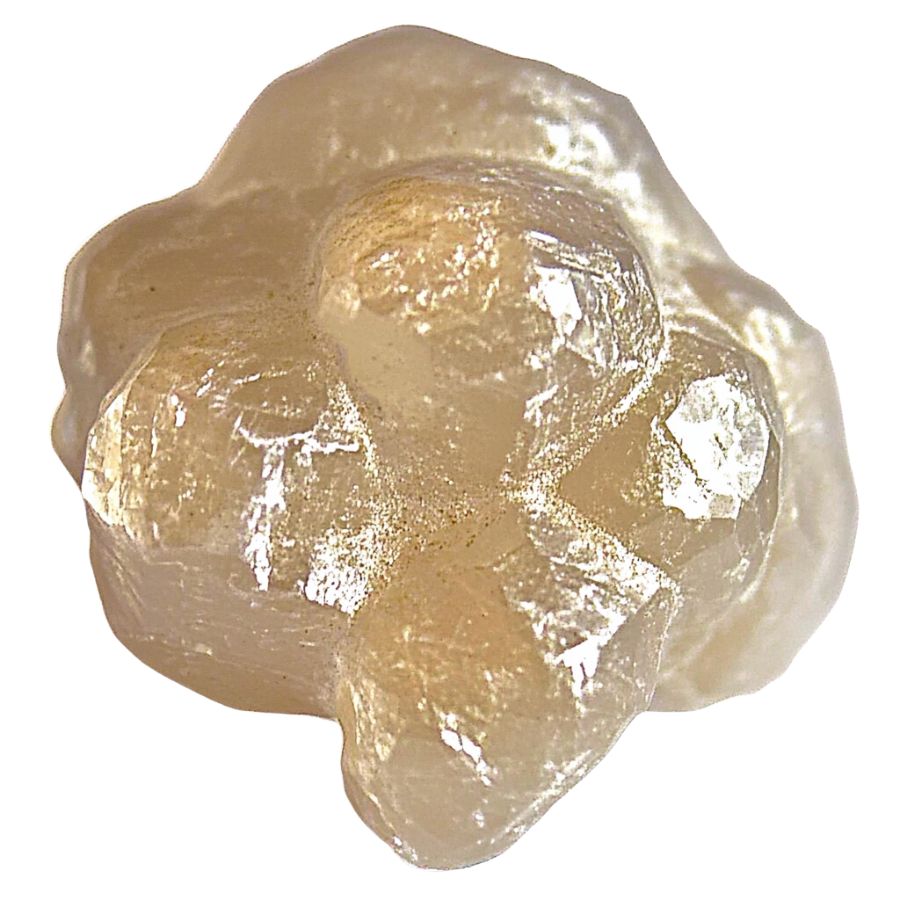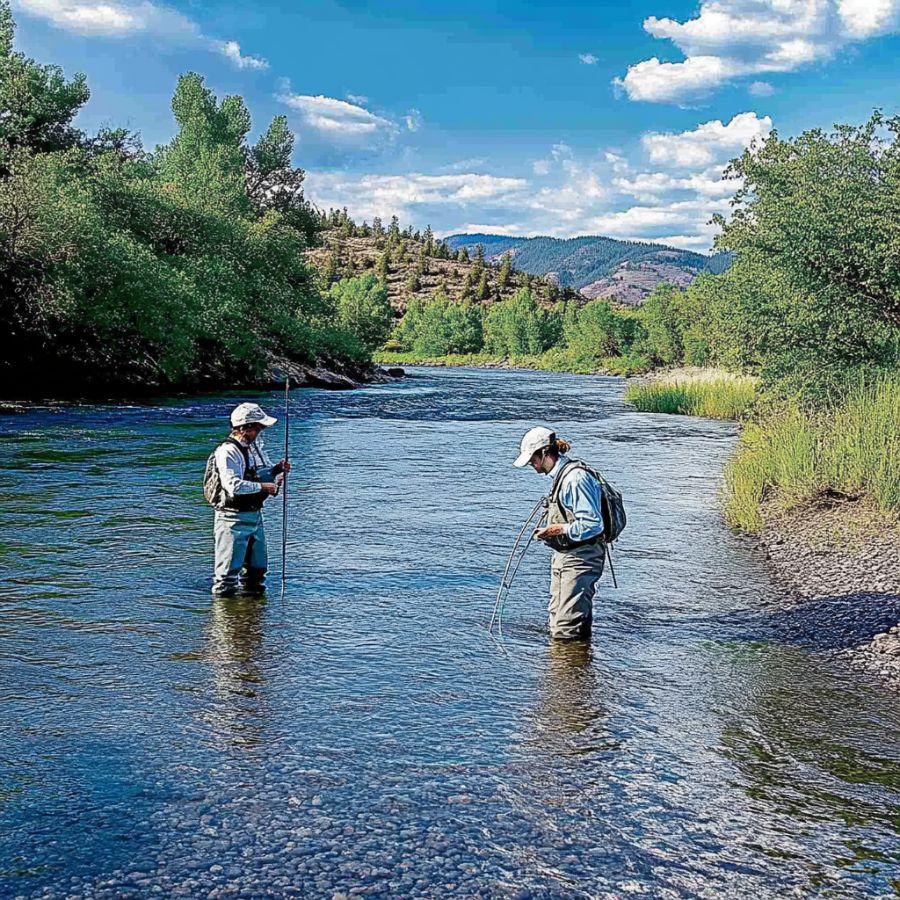From the Pacific Ocean to the Mojave Desert, from the redwood forests to the Sierra Nevada mountains, California is a treasure trove of natural wonders. Among these treasures are hidden gems – literally.
Today, we’ll show you the 18 best places to find diamonds in California. Our list saves you time and effort, ensuring you’re looking in the right spots.
Whether you’re a seasoned prospector or a curious beginner, these locations offer the best chances for striking it rich.
How Diamond Forms Here

Diamonds form deep within the Earth, about 90 to 200 kilometers below the surface, where conditions are extreme.
Here, carbon atoms are subjected to intense heat—around 900 to 1,300 degrees Celsius—and immense pressure, about 45 to 60 kilobars. This environment causes the carbon to crystallize into diamond structures over millions to billions of years.
Over time, erosion and weathering expose these stones, making them accessible for mining.
What’s amazing is that each diamond’s journey from deep within the Earth makes it unique, with its own shape, size, and clarity.
The Types of Diamond
Diamonds are classified into various types based on their structure and color. Here are some of the popular types of diamond:
Black Diamond

Black diamonds, also known as carbonados, are truly one-of-a-kind. Unlike their clear cousins, these stones are opaque and have a matte finish.
They don’t sparkle in the traditional sense but have a unique, mysterious charm all their own.
What makes black diamonds special is their age and formation. Most are believed to be 2.6 to 3.2 billion years old, making them some of the oldest gemstones on Earth.
Their dark color comes from numerous inclusions and the presence of graphite or other minerals.
Recently, a massive black diamond called “The Enigma” made headlines. Weighing 555.55 carats, it showcases the growing interest in these unusual stones.
Yellow Diamond

Yellow diamonds shine with a vibrant, sunny hue. Their color ranges from light yellow to deep, intense shades.
This beautiful color comes from nitrogen atoms in the diamond’s structure. These atoms absorb blue light and reflect yellow, giving the stone its unique appearance.
Unlike clear diamonds, yellow diamonds are graded based on their color intensity. The deeper and richer the yellow, the more valuable the stone. This grading system is different from the one used for colorless diamonds.
Blue Diamond

The color of the blue diamond can range from a soft, icy blue to a deep, vivid shade. This striking blue comes from boron in the diamond’s crystal structure. It’s a rare occurrence in nature, making these diamonds very uncommon.
One cool thing about blue diamonds is how they react to ultraviolet light. Many of them show a unique glow called fluorescence. This can make their color even more impressive under certain lighting.
Blue diamonds have some famous examples. The Hope Diamond is probably the most well-known. It’s known for being the largest diamond weighing 45.52 carats. It’s current value is estimated to be US$200–350 million.
Red Diamond

Red diamonds are incredibly rare and highly prized. Their distinct red color comes from structural imperfections in the diamond’s crystal lattice, not from chemical impurities like other colored diamonds.
These diamonds are so rare that very few have ever been found. Each discovery of a red diamond is a significant event in the gemstone world.
Their rarity makes them even more valuable than pink or blue diamonds, which are already considered extremely precious.
Some famous red diamonds have captured public attention. The Moussaieff Red from Brazil and the Kazanjian Red Diamond from South Africa are notable examples.
In 1987, a red diamond (Hancock Diamond) sold at auction for a record-setting $927,000, highlighting the extraordinary value placed on these rare gems.
Pink Diamond

Pink diamond’s color can be a soft, delicate pink or a deep, vivid rose. What’s interesting is that scientists aren’t entirely sure why they’re pink. It’s thought to be due to a twist in their crystal structure, not because of any specific element.
These diamonds are incredibly scarce. For every million carats of rough diamonds mined, only one carat might be a pink diamond. This rarity makes them highly prized by collectors and jewelers.
Even small pink diamonds can be worth a lot because of their rarity. They’re often used in high-end jewelry, where their unique color makes a big impact.
Green Diamond

Green diamonds are some of the most unusual and unique colored diamonds. Their color can range from a light mint to a deep forest green
What makes them special is how they get their color. It’s not from a chemical element, but from exposure to natural radiation over millions of years.
This natural coloring process is incredible. It happens when diamonds are near radioactive rocks deep in the earth. The radiation changes the diamond’s crystal structure, creating the green color.
Green diamonds often show unique light effects. Some might have a strong glow under certain lights, adding to their allure..
What Rough Diamonds Look Like
Rough diamonds can be challenging to identify. Below are a few proven techniques that will make it easier for you to identify the rough diamond.
But real quick before we get into the specifics:
DON'T MISS OUT ON ANY GREAT FINDS!
While you're out searching for Diamonds you're going to find a lot of other interesting rocks and minerals along the way. The last thing you want to do is toss out something really interesting or valuable. It can be easy to misidentify things without a little guidance.
We've put together a fantastic field guide that makes identifying 140 of the most interesting and valuable rocks and minerals you will find REALLY EASY. It's simple to use, really durable, and will allow you to identify just about any rock and mineral you come across. Make sure you bring it along on your hunt!
Check for a Glassy or Waxy Luster

One of the most noticeable features of a rough diamond is its luster. Uncut diamonds often have a glassy or waxy appearance.
This is because the rough surface scatters light differently than a smooth, cut surface.
Look for an Octahedral Shape

Rough diamonds typically take on an octahedral shape, which resembles two pyramids joined at the base. This shape is a result of the diamond’s cubic crystal structure.
However, not all rough diamonds will have a perfect octahedral form, as they can be distorted or irregular due to natural forces during formation.
Assess the Density and Weight

Diamonds are known for their density and weight. A rough diamond will feel heavy for its size compared to other stones.
You can test this by holding the stone in your hand and comparing it to a known non-diamond.
Look for a Crystalline Texture

When examining a rough diamond, you may notice a distinct crystalline texture on its surface.
This is due to the diamond’s atomic structure and can help distinguish it from other minerals or synthetic stones.
A Quick Request About Collecting
Always Confirm Access and Collection Rules!
Before heading out to any of the locations on our list you need to confirm access requirements and collection rules for both public and private locations directly with the location. We haven’t personally verified every location and the access requirements and collection rules often change without notice.
Many of the locations we mention will not allow collecting but are still great places for those who love to find beautiful rocks and minerals in the wild without keeping them. We also can’t guarantee you will find anything in these locations since they are constantly changing.
Always get updated information directly from the source ahead of time to ensure responsible rockhounding. If you want even more current options it’s always a good idea to contact local rock and mineral clubs and groups
Tips on where to look
Once you get to the places we have listed below there are some things you should keep in mind when you’re searching:
Look in Sedimentary Rocks

Sedimentary rocks are a great place to start. These rocks form from layers of materials that have settled over time.
Diamonds can be found in these layers. Look for areas where the rock has been worn down or eroded. This is where diamonds might be exposed.
Explore Riverbeds

Rivers are another excellent spot. Over time, water carries diamonds downstream. Look for gravel beds in rivers. These spots can hold diamonds that have been washed away from their original location.
Pay attention to bends in the river. These areas often collect heavier materials, including diamonds.
Check Old Mining Sites

Old mining sites are worth exploring. Many diamonds were left behind during past mining activities.
Look for areas where mining was done in the past. Even if the site is no longer active, it can still be a good place to find hidden gems.
Investigate Hillsides

Hillsides can also be promising. Erosion can expose diamond-bearing rocks. Look for loose soil or rock on slopes.
These areas may reveal diamonds that have been pushed to the surface over time.
Some Great Places To Start
We have compiled a list of the best places to start your search for diamonds in California. This guide highlights notable locations where diamonds have been found, offering enthusiasts a chance to explore these unique sites.
Always Confirm Access and Collection Rules!
Before heading out to any of the locations on our list you need to confirm access requirements and collection rules for both public and private locations directly with the location. We haven’t personally verified every location and the access requirements and collection rules often change without notice.
Many of the locations we mention will not allow collecting but are still great places for those who love to find beautiful rocks and minerals in the wild without keeping them. We also can’t guarantee you will find anything in these locations since they are constantly changing.
Always get updated information directly from the source ahead of time to ensure responsible rockhounding. If you want even more current options it’s always a good idea to contact local rock and mineral clubs and groups
Webber Hill

Webber Hill is known for its abundance of diamonds that have been found in the gravel deposits along the American River.
The diamonds at Webber Hill are alluvial, meaning they were carried downstream and deposited by the river over thousands of years. What makes Webber Hill ideal for finding diamonds is the presence of ancient river channels that have been exposed by erosion and mining activity.
These channels contain concentrations of heavy minerals like diamonds, rubies, and sapphires that were washed down from the Sierra Nevada mountains.
Diamonds found here are typically small, ranging from 1 to 3 carats, but can occasionally be larger. Successful prospectors use sluice boxes and metal detectors to search the gravel bars and banks of the American River.
Klamath River

Klamath River, located in Weitchpec, Humboldt County, is a hidden gem for diamond enthusiasts. The river’s banks are often washed by powerful currents, which can expose and transport diamonds from upstream sources.
The surrounding volcanic rock formations contribute to the presence of diamonds, as they are formed under high-pressure conditions.
Here, you can sift through gravel and sediment left by ancient volcanic activity, where diamonds may be hiding among the pebbles.
The Klamath River’s remote beauty adds to the adventure of gemstone hunting, providing a serene backdrop while you search for these precious stones.
French Corral

French Corral, located in northwestern Nevada County about nine miles northwest of Nevada City, was the site of extensive gold mining operations in the 1800s.
This historic mining camp, established in 1849, became an important center for placer and hydraulic mining along San Juan Ridge.
What makes French Corral particularly interesting for diamond enthusiasts is that it was here, sometime before 1867, that the largest known diamond to come from California was discovered – a 7¼ carat gem found in a sluice box.
The area’s auriferous gravels, deposited by the ancestral Yuba River, contain a variety of heavy minerals including zircon, garnet, magnetite, pyrite, and diamonds. These basal gravels, known as the “blue lead”, were the richest, averaging $0.70 per cubic yard at a gold price of $35 per ounce.
While little remains of the original town today, French Corral’s place in history as a diamond-producing locality continues to intrigue gem hunters and prospectors. The Wells Fargo building, one of the few gold rush era structures still standing, serves as a reminder of the area’s storied past.
Yankee Hill

Yankee Hill is nestled at an elevation of 1,982 feet and just 6.5 miles from Paradise. The region’s rich history dates back to 1861 when a notable diamond weighing 1.5 carats was unearthed here.
The placers are primarily alluvial deposits, where diamonds, formed deep within the Earth, have been transported by ancient rivers and streams, making them accessible for modern prospectors.
Gem hunters are often drawn to Yankee Hill for its potential to uncover not just diamonds, but also other valuable minerals like Gold and Axinite, making it a prime spot for both amateur and seasoned gem enthusiasts.
Lower Trinity River

Lower Trinity River is part of the Klamath River system and flows through lush forests and rugged mountains, creating a picturesque backdrop for gemstone hunting.
The area is rich in geological history, with volcanic activity and river erosion contributing to the formation of diamonds. The river’s swift currents and shifting sands often wash away lighter materials, revealing heavier gems like diamonds.
Additionally, the river’s remoteness means fewer crowds, allowing for a more peaceful and focused hunt. As you explore the banks of the Lower Trinity River, keep an eye out for sparkling treasures hidden among the pebbles and gravel.
Places Diamond has been found by county
After discussing our top picks, we wanted to discuss the other places on our list. Below is a list of the additional locations where we have succeeded, along with a breakdown of each place by county.
| County | Location |
| San Mateo | Alpine Creek |
| Plumas County | Nelson Point |
| Plumas County | Sawpit Flat |
| Plumas County | Gopher Hill |
| Plumas County | Upper Spanish Creek |
| El Dorado County | Webber Hill |
| Butte County | Around Thompson Flat Road in Oroville |
| Butte County | Cherokee Flat |
| Del Norte County | Smith River |
| DEL NORTE COUNTY | CRESCENT CITY |
| Amador County | Around Indian Gulch in Fiddletown |
| Amador County | Loafer Hill |
| Amador County | Jackass Gulch |


